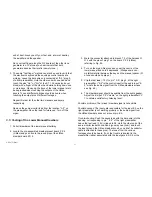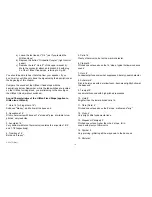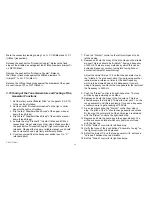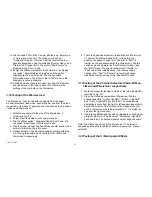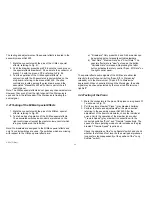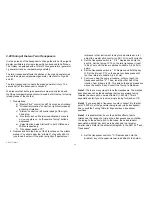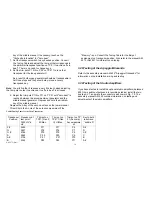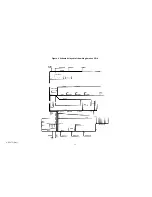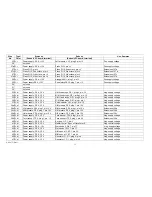
buttons " Ensemble Tuning" to create the "orchestra effect"
or "chorus effect".
12. The versatility of these controls discussed above is rather
complex and we are limiting the discussion just to the
description of the bare facts. We recommend that you spend
some time studying the couplers and the ensemble tuning
feature, referring to the summary below.
There is one additional button that needs to be mentioned.
The button "Manual Coupler" on the right panel, at first
glance, performs the identical operation as the button
"Program Coupler" on the left panel. However, the difference
is that the right panel coupler buttons are subject to control
from the sound computer while the left panel button is an
unconditional coupler. That means that you can force the
manual coupler into operation (by the left panel button) even
if the sound computer ordered "no coupling".
Summary of the Coupler and Tuning Modes
a)
No coupler on and no ensemble tuning buttons on
:
U/Man and M/M an respectively can be set up for
drawbars or fixed stops and can be played
independently. The tones should be in perfect tune. If
not, tune for zero beat with the rotary control
"Orchestra Intonation".
b)
"Manual Coupler" on the right panel on:
U/Man and
M/M an respectively can be set up for drawbars or
fixed stops. The U /M an retains its own voicing.
When playing the M/Man the registrations of both
manuals will be heard. By the way, this is one method
(not the only one) to combine drawbars with fixed
stops (borrowed from two different manuals).
Any desired degree of ensemble tuning can be
selected by the corresponding 4 push buttons. Try it
out by selecting some brass stops on both manuals
and use the ensemble tuning button III.
c) "Manual Coupler" and "Orchestra Coupler" on: Select
any fixed stops on the upper manual. Set the "
Drawbar/Fixed Stops" switch of the M /Man to fixed
stops (down). Two sets of stops will sound on the
M/Man, identical in sound character (as selected in
the U /Man) but coming from two generators/
keyers/voicing chains. Detune the sets as desired by
the ensemble tuning buttons. If the M/Man switch "
Drawbars/Fixed Stops" is u p (drawbars) the M/Man
drawbars will sound, together with one set of the
U/Man fixed stops.
Every control button used so far can be operated on by the sound
computer, that is, they are programmable. Should it be desirable to
couple the manuals while the organ is under sound computer
control, this can be accomplished by the "Program Coupler" on the
left control panel. Of course, this latter action is meaningful only as
long as the selected sound computer program does not contain the
coupler function already.
If these explanations magnified your confusion about the subject,
don't blame us or yourself. The features of the Galaxy are rather
intricate and it will require some time and experimentation until you
can play it blindfolded.
One last word of caution: The tone generator l is responsible for the
voices of the U/Man 11, the M/Man, the L/Man and the Pedals
respectively. Its pitch stays constant and is not affected by the
ensemble toning. (The master pitch control, the "Slalom" control
AM 075 (Part)
23
Содержание GALAXY
Страница 1: ...Master Assembly GALAXY AM 075 AM 075 Part 1 ...
Страница 4: ...Figure 1 Layout of the building blocks in the organ top AM 075 Part 4 ...
Страница 5: ...Figure 2 Block diagram of the audio distribution and associated DC controls AM 075 Part 5 ...
Страница 6: ...AM 075 Part 6 ...
Страница 33: ...Figure 4 Schematic layout of the wiring harness GO 4 AM 075 Part 33 ...



